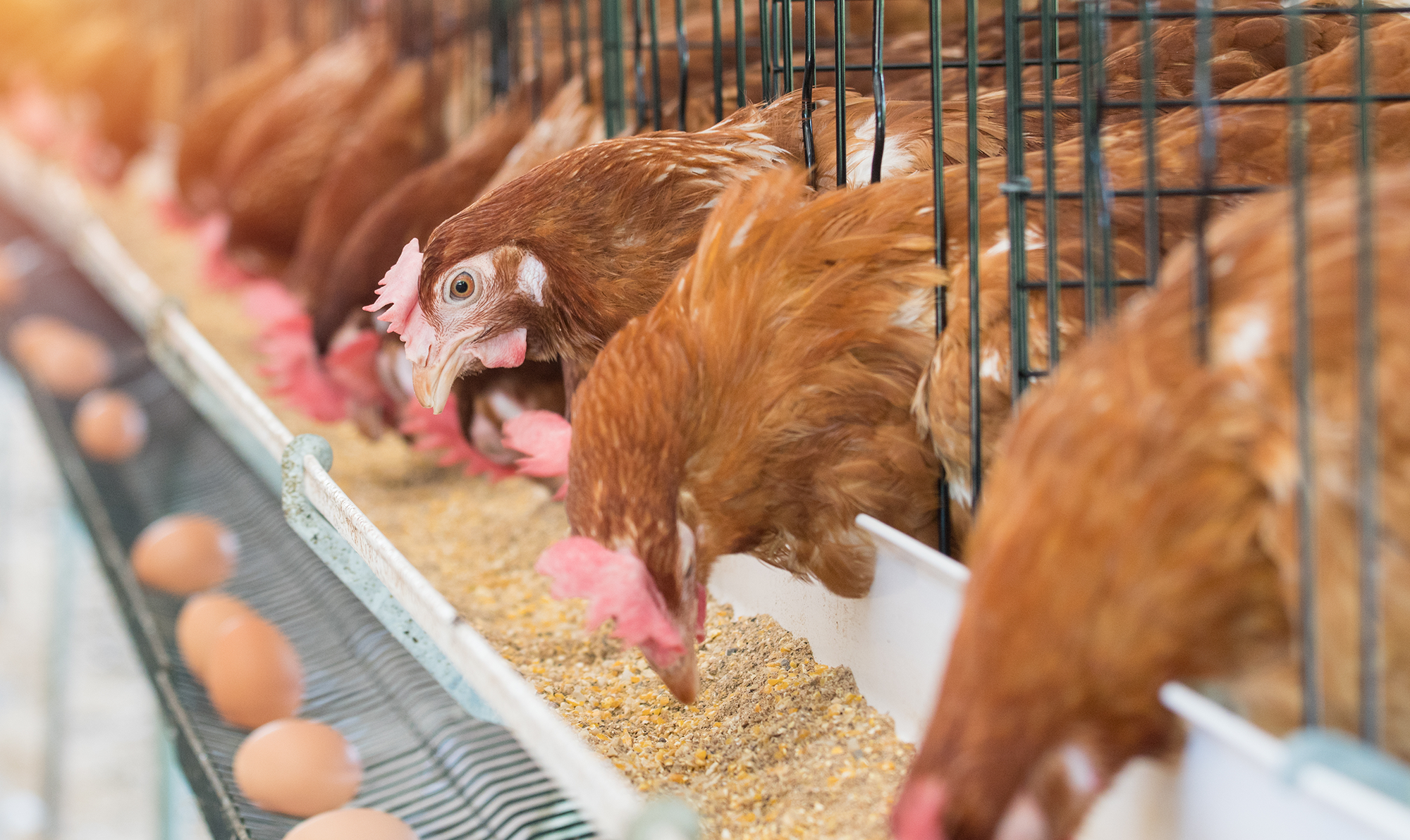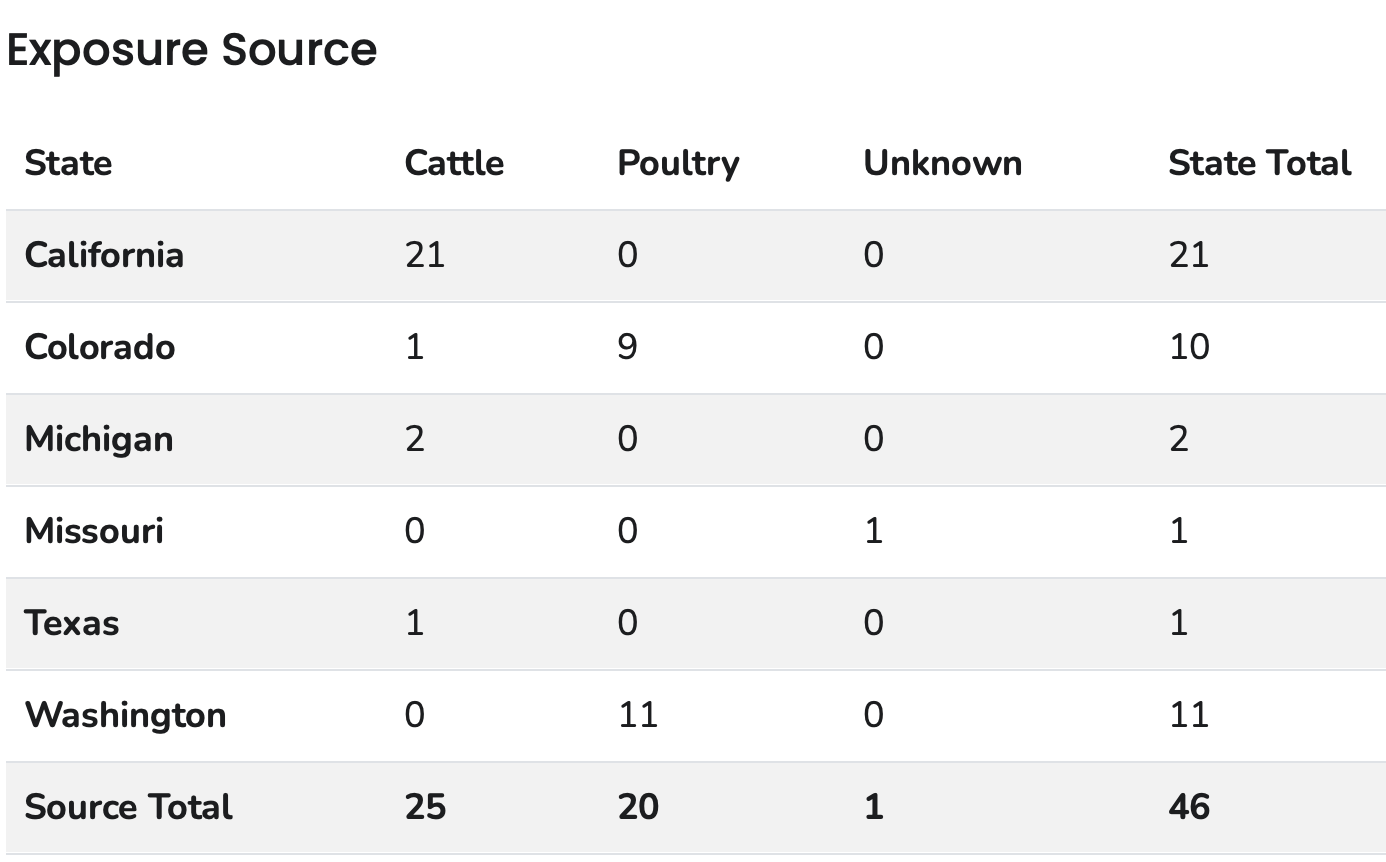
Some election post mortems decry the price of eggs, as though any president can wave a magic wand and increase supply. Egg prices skyrocketed in 2022 and have gone up again not because Joe Biden is a bad president but because the H5N1 bird flu decimates flocks.
Officials detected it in US poultry farms in January 2022.
The bird flu spread to dairy cows in early 2024. In March, USDA reported a “multistate outbreak.” Then on April 1, the Centers for Disease Control (CDC) confirmed the “first instance of likely mammal to human spread of HPAI A(H5N1) virus.” The source: dairy cows in Texas.
Unlike poultry farms, which must euthanize entire flocks when one bird tests positive, dairy farms go about their business with minimal disruption. This week, USDA reported that they had found the virus “in at least 446 cattle herds in 15 states.”
In addition to cattle, regulators have detected the avian flu virus in Oregon hogs, the first known case in swine.
USDA focuses on the food supply, not public health at large. Thus, the agency minimized the finding:
This farm is a non-commercial operation, and the animals were not intended for the commercial food supply. There is no concern about the safety of the nation’s pork supply as a result of this finding.
“We will have a bird flu pandemic,” Robert Redfield, former director of the CDC, bluntly predicted in a television interview in June. “It’s not a question of if; it’s more a question of when … Once the virus gains the ability to attach to the human receptor and then go human to human, that’s when you’re going to have the pandemic.”
This latest version of avian flu is spreading around the world.
A(H5N1) bird flu viruses that are currently circulating in wild birds and poultry in much of the world … emerged to become the predominant subtype of HPAI H5 in the fall of 2021… In contrast to previous A(H5N1) viruses… a small number of sporadic human cases with current A(H5N1) bird flu viruses have been reported globally. However, illness in humans from all bird flu virus infections has ranged in severity from no symptoms or mild illness to severe disease that resulted in death.
This is a good time to note the similarities between pigs and humans. From 2013:
Pigs are an ideal animal model for human health and diseases because their anatomy and physiology are similar to humans and because the porcine genome is three times closer than the mouse genome to that of the human.
Which states?
Avian influenza virus type A (H5N1) has been confirmed in dairy cattle in 15 states. The average dairy herd size in 2022 was 337 animals. However, there is a huge range: in California, the average herd is 2,300 animals. In Texas, the average size ranges from 1,000 to 5,000.
- California, 259 herds
- Colorado, 64 herds
- Idaho, 35 herds
- Iowa, 13 herds
- Kansas, 4 herds
- Michigan, 29 herds
- Minnesota, 9 herds
- New Mexico, 9 herds
- North Carolina, 1 herd
- Ohio, 1 herd
- Oklahoma, herds
- South Dakota, 7 herds
- Texas, 26 herds
- Utah, 13 herds
- Wyoming, 1 herd
In its report this week, the CDC noted that human infections are underreported, in part because some workers are asymptomatic.
Dairy workers infected
Since April, the CDC has expanded its surveillance of dairy farm workers and reported this week:
The report found that a significant percentage of H5N1 infections went undetected in dairy workers who worked on farms with cows that were confirmed positive for the virus last summer. Among 115 farm workers who underwent blood tests in Michigan and Colorado, eight had evidence of recent infection in the form of antibodies—but only half of them could recall having symptoms. “All eight had either been milking cows or cleaning the milking mechanisms, officials said.
Among other things, that result suggests that many more American farm workers could become or already have been infected with the virus without knowing it—all the more reason, the experts say, for federal and state health agencies to aggressively offer testing and enhanced personal protective equipment(PPE) to those with boots on the ground at U.S. dairy and poultry farms…
In the United Kingdom, though, government officials have already raised the risk level of the bird flu virus from medium to high. And in the U.S., human H5N1 cases in California and Washington are on the rise. Nationally, 46 human cases have been documented and confirmed during the 2024 outbreak, including a person in Missouri with no known exposure to either cattle or poultry, the two primary sources of exposure so far. All of the individuals have experienced only mild symptoms, such as conjunctivitis or cough, and none have been hospitalized.
From the outset of this year’s H5N1 spread, federal and state agencies have struggled to conduct adequate testing on farms and among farm workers. The reasons are legion, but they include the fact that farmers fear a curtailing of their operations if positive cases are identified, and that many immigrant workers don’t want to interact with any government officials, let alone submit to blood testing or risk having to stay home from work and not get paid if they do test positive.
Look at that cover photo again, of assembly line egg production in a factory farm.
Pay a little more if you can afford it and buy eggs from free-range chickens. The chickens are healthier and less stressed.
Known for gnawing at complex questions like a terrier with a bone. Digital evangelist, writer, teacher. Transplanted Southerner; teach newbies to ride motorcycles. @kegill (Twitter and Mastodon.social); wiredpen.com

















